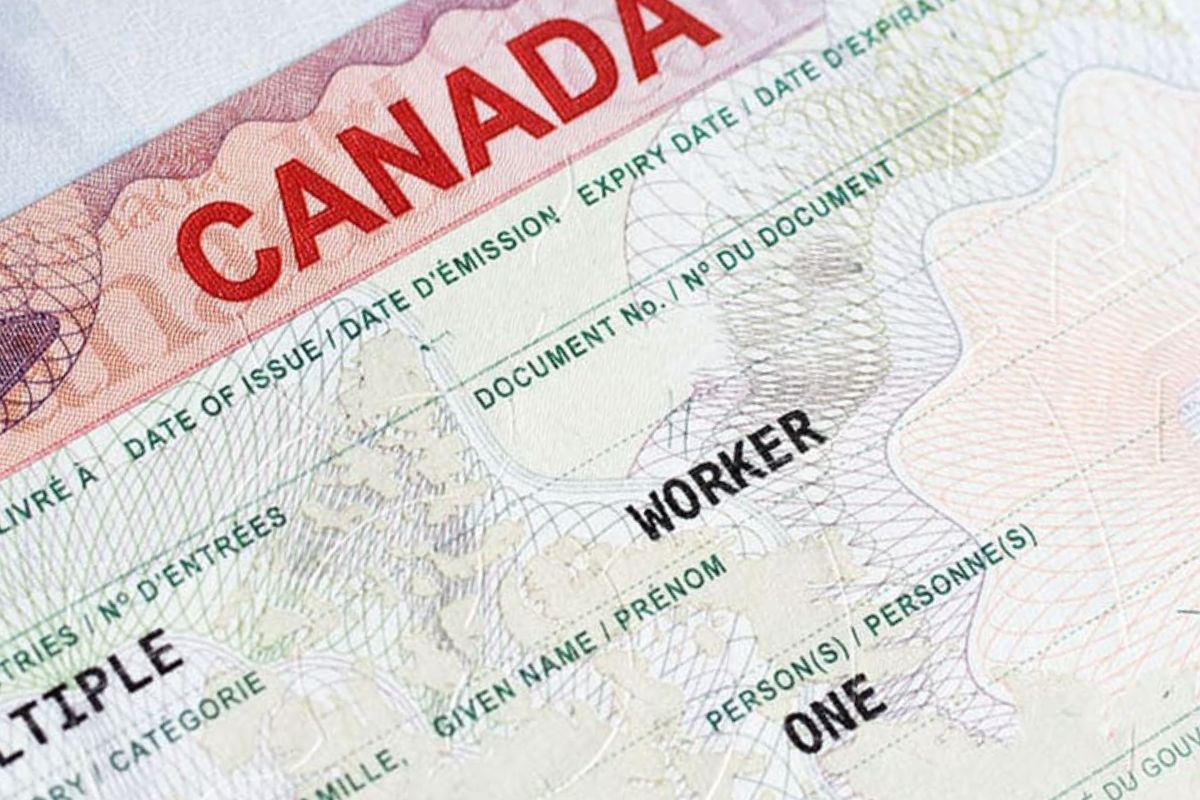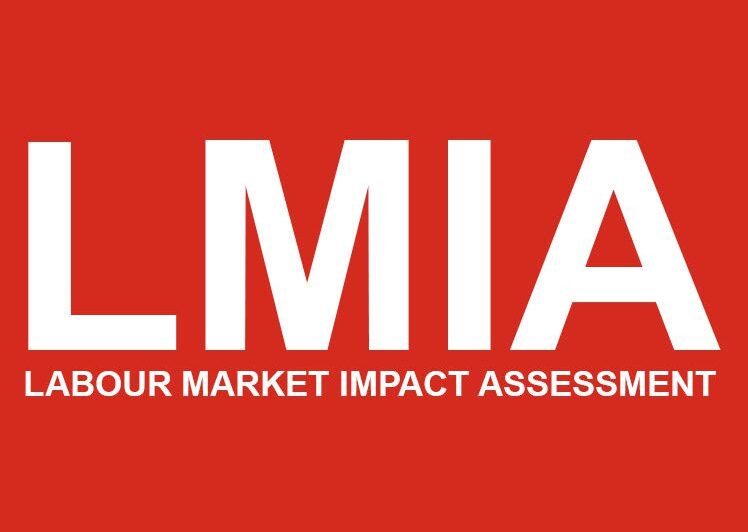What Happens After Your LMIA Gets Approved?
So, your Labour Market Impact Assessment (LMIA) just got approved? congratulations! That’s a big win, no doubt. But here’s the truth no one emphasizes enough: your journey to working in Canada is only halfway there.
A Labour Market Impact Assessment approval is essential, yes, but without a proper and well-prepared work permit application, you’re not getting on that plane. Let’s talk about why the work permit deserves just as much of your attention and how to actually get it right.
LMIA Approval Isn’t the Final Destination—It’s Just the Beginning
So, your employer got a positive Labour Market Impact Assessment (LMIA). Amazing, right? It feels like a big win and it is but don’t pop the champagne just yet.
A Labour Market Impact Assessment (LMIA) is not your golden ticket into Canada. It’s more like the permission slip your employer needs to even invite you to the game. What it says is: “This company tried to hire a Canadian for this role, but couldn’t so we’re allowing them to recruit a foreign worker.”
But here’s the catch: that foreign worker still has to be approved. And that’s where you come in.
When you apply for the actual work permit, you’re not just submitting paperwork, you’re making your case to an immigration officer. You need to prove that:
- You’re genuinely qualified for the role listed in the Labour Market Impact Assessment (LMIA).
- You understand and accept that this is a temporary job.
- You don’t plan to overstay or break the conditions of your visa.
And this isn’t about copy-pasting what the employer said. Officers will dig deeper. They’ll look at your employment history, education, past travel records, and whether your story actually makes sense. They want to see consistency, credibility, and compliance.
Let’s be real: many applicants make the mistake of thinking an Labour Market Impact Assessment (LMIA) is enough. It’s not. Officers reject work permits even after Labour Market Impact Assessment (LMIA) approval—often because the worker didn’t make a strong enough case, or raised red flags about staying permanently without status.
Here’s what you can do right:
- Provide evidence of your ties to your home country—like property ownership, family obligations, or other reasons to return.
- Match your background clearly to the job description in the Labour Market Impact Assessment (LMIA).
- Be honest, accurate, and clear in your explanation of why you’re coming—and what you plan to do after the work permit expires.
Think of the Labour Market Impact Assessment (LMIA) as the employer’s side of the story. The work permit? That’s your story. And both need to align perfectly.
Because at the end of the day, Canada isn’t just trying to fill a job, they’re trying to make sure the system is fair, that workers are protected, and that immigration integrity is preserved.
You’ve got one shot to get this right. Don’t let a weak application undo all the effort it took to get the Labour Market Impact Assessment (LMIA) approved in the first place.
Two Big Things You Need to Prove
- That you’re fully qualified for the job
- That you will leave Canada once your permit expires
These are the two pillars of a solid work permit application. Miss one, and things can fall apart quickly.

Proving You’re the Right Fit for the Job (and Avoiding a Silent Rejection)
You’ve got a positive Labour Market Impact Assessment (LMIA) in your corner, great! But that doesn’t automatically mean the officer reviewing your work permit application will see you as the obvious choice for the role. Why? Because every LMIA outlines specific, measurable criteria, like the job title, wage, NOC code, duties, and required work experience. And your application has to reflect all of it.
This is where things fall apart for many applicants.
Immigration officers aren’t flipping through your documents hoping to “get the vibe” that you’re qualified. They’re checking, line-by-line, whether your past experience matches what’s been authorized in the Labour Market Impact Assessment (LMIA).
Unfortunately, a lot of people sabotage their own chances by submitting vague or recycled resumes, generic cover letters, and reference letters that barely scratch the surface. It’s not enough to say “I worked as a technician.” You need to show what kind of technician, what tasks you handled, and how that connects to the job you’re applying for.
Here’s what to do instead, and how to do it right:
✔ Tailor Your Resume to the Job That’s Been Approved
Don’t use a one-size-fits-all resume. Your resume should speak directly to the role outlined in the Labour Market Impact Assessment (LMIA). That means:
- Use the same job title that appears in the LMIA.
- List your responsibilities in the same order or structure as the approved duties.
- Emphasize tools, techniques, or certifications that match the NOC expectations.
Think of your resume like a mirror, it should reflect the job offer, almost point for point.
✔ Make Sure Your Experience Aligns With the Employer’s Job Description
If the employer said they need someone with three years of experience in food service supervision, and your resume says “served customers at a café,” that’s a problem. You need to show that your experience level and scope of responsibility meets or exceeds the role they’ve outlined.
- Include the number of years/months worked in similar roles.
- Mention how many people you managed, if the job is supervisory.
- Be specific. Name the equipment, processes, or systems you used.
A good application tells a story. A great one leaves no room for doubt.
✔ Submit Detailed Reference Letters (Not Just Job Titles)
This is a big one. Reference letters are often the deciding factor in an officer’s assessment and most are far too thin. Don’t just get a letter that says: “So-and-so worked for us as a cook from 2021 to 2023.”
Instead, get a letter that:
- Lists the duties you performed (and match them to the LMIA job description).
- States your job title, employment dates, and work location.
- Is signed and dated by a manager or HR, ideally on company letterhead.
- Mentions hours worked per week and wage, if possible.
The more detailed and professional your letters, the more credible your application appears.
Bottom Line:
If the LMIA is the employer’s promise to the government, your work permit application is your promise to live up to it. Every line should confirm, “Yes, I’m the worker this job was approved for.” Miss that mark, and the officer might move on to the next file without a second thought.
Want help reviewing your resume, reference letters, or building a rock-solid work permit application? That’s where we come in. At Akrami & Associates, we’ve helped hundreds of workers not just get job offers but actually land the permits to make them real.

Proving You’ll Leave Canada When the Job’s Done (Without Killing Your Future PR Plans)
Let’s talk about what immigration officers really want to see because it’s not just about your resume or the job offer. It’s about your intent. Canada’s temporary work permit system is built on one big assumption: you’re here to work, not to stay forever.
Now, that doesn’t mean you can’t apply for permanent residence later. But in this moment, your application has to show that you understand the deal: you’re coming for a job, and when it ends, you’ll leave unless authorized to stay longer.
And no, saying “I promise to go back” isn’t enough.
You need to show the officer, with hard proof, that you have good reasons like personal, financial, professional to return to your home country.
Here’s how to build that case with confidence:
✔ Financial Stability in Your Home Country
This is one of the strongest ways to show roots. Officers want to see that you have something to go back to and money talks.
- Include recent bank statements in your name that show steady savings.
- Show proof of property ownership or rental agreements in your home country.
- If applicable, include investment records, business ownership documents, or financial statements.
The goal here is to show that you’re anchored back home and not looking to start over from scratch in Canada.
✔ Strong Family Ties
If your spouse, kids, or elderly parents are staying behind, say so and prove it.
- Include birth certificates or marriage certificates showing relationships.
- Add a simple letter explaining who lives where, and your responsibilities to them.
- If you financially support someone, include those receipts or bank transfers.
The message is simple: you can’t stay in Canada forever, because people are counting on you back home.
✔ Ongoing Work, School, or Personal Obligations
What are you returning to? That’s the question the officer wants answered. If there’s a job, school, or long-term project waiting for you then show the evidence.
- A letter from your employer confirming a leave of absence or planned return.
- School registration or transcripts showing you’re mid-program.
- Business ownership? Include a license or registration certificate.
Immigration officers are more comfortable approving applications when there’s a logical end date and a strong reason to return.
✔ Your Personal Story Has to Make Sense
Think of your application like a story. Everything like your job offer, your past experience, your family situation, your finances needs to fit together. If something feels off or contradictory, the officer will hesitate.
That’s why your cover letter or personal explanation letter is so important. Use it to:
- Explain why this job in Canada makes sense for your career.
- Clarify why you’re not bringing your family (if they’re staying behind).
- Reassure the officer that you’re here for a purpose, not to fly under the radar.
When your story is clear, well-documented, and logically organized, the officer doesn’t have to guess your intent, they can see it.
Need Help Crafting the Full Picture?
At Akrami & Associates, we know how to turn loose documents into strong narratives. We help clients around the world build persuasive, structured work permit applications that check every box from proving qualifications to showing clear intent to return.
Don’t leave it to chance. Immigration is about strategy and we’re here to guide yours.
Why This Step Often Gets Overlooked
Let’s be honest after the Labour Market Impact Assessment is approved, it’s easy to get caught up in excitement. We’ve seen it happen: applicants think the hardest part is over. But if the work permit isn’t taken seriously, that hard-earned Labour Market Impact Assessment (LMIA) can go to waste.
It’s not just paperwork, it’s a persuasive application that must stand on its own, no matter how perfect your Labour Market Impact Assessment (LMIA) is.

A Quick Recap
Getting a Labour Market Impact Assessment approved is like getting your foot in the door. But the work permit is what lets you actually walk through it.
To succeed, you need to:
- Match your profile precisely with what was approved in the Labour Market Impact Assessment (LMIA).
- Provide solid proof of your intent to return home after the work term.
- Go beyond basic job titles and submit documentation that actually tells your story, a story that says: “I’m the right person for this job, and I understand the rules.”
Final Thoughts: Do It Right, Or Do It Again Later
The Canadian work permit process after Labour Market Impact Assessment approval is not just a formality, it’s your green light to step into a new chapter. But only if you treat it with the seriousness it deserves.
If you’re unsure about how to structure your application, or whether your supporting documents are strong enough, don’t leave it to chance. Immigration officers don’t give second chances easily. One small oversight can cost you time, money, and opportunity.
So take a breath, get organized, and make sure every document you submit has a purpose and a punch.
Need help pulling it all together? That’s where Akrami and Associates come in. Whether it’s crafting your resume to match the Labour Market Impact Assessment or getting those employment letters just right, we’ve helped thousands do it and we can help you too.
Your Canadian journey might’ve started with the LMIA, but the work permit is where the real magic happens.
Related Immigration Pathways You Should Know About
While a work permit following a Labour Market Impact Assessment approval is one of the most common temporary pathways into Canada, it’s not the only route. Depending on your goals, whether you want to stay temporarily or eventually transition to permanent residence, there are other options worth exploring. For instance, once you’ve worked in Canada for a year under an LMIA-based permit, you may be eligible to apply for Canadian Experience Class (CEC) through Express Entry. There’s also the Provincial Nominee Program (PNP) if you’ve got a job offer in a specific province. And if your spouse is accompanying you, they might qualify for an open work permit, allowing them to work for any employer in Canada.
Immigration isn’t one-size-fits-all. It’s about choosing the right path and sometimes, that means planning two or three steps ahead. That’s where working with the right team makes all the difference.
Why Choose Akrami & Associates?
At Akrami & Associates Immigration Law Firm, immigration isn’t just our job, it’s our mission. We’ve helped thousands of clients navigate the complexities of Canadian immigration, from securing Labour Market Impact Assessment approvals to crafting compelling work permit applications that actually get results.
But what really sets us apart? It’s the detail. We don’t just fill out forms, we build your case like it’s our own. That means:
- Tailoring your documents to your specific situation
- Identifying weak points before the officer does
- Providing strategic advice based on years of hands-on experience with real cases
Whether you’re an employer trying to bring in skilled workers, or a foreign national trying to secure your future in Canada, we make sure your story gets told clearly, professionally, and powerfully.
Ready to Take the Next Step?
If your Labour Market Impact Assessment (LMIA) has been approved and you’re not sure what comes next or if you’re just starting to explore your options don’t navigate the process alone. Book a consultation with Akrami & Associates today. We’ll walk you through your options, help you build a strong case, and stand by you every step of the way.
Latest Immigrations News

September 11, 2025
Canada Super Visa: Step-by-Step Guide for Parents and Grandparents
For many Canadian citizens and permanent residents, bringing parents or grandparents to Canada for extended visits is more than just a wish, it’s a heartfelt need. While most people first consider the traditional visitor visa, there is another option designed specifically for family reunification: Super Visa applications. [...]

August 23, 2025
Intra-Company Transfer (ICT) Work Permit, Your Complete Guide to Working in Canada
For multinational companies, moving key talent across borders is often essential for growth and operational success. The Intra-Company Transfer (ICT) Work Permit provides a streamlined pathway to bring experienced employees to Canada without the time-consuming Labour Market Impact Assessment (LMIA) process. For foreign professionals, it’s more than [...]

August 10, 2025
Lost Your Canadian Permanent Residency? Here’s How to Restore It Legally
Lost Your Canadian Permanent Residency? Here's What You Can Still Do in 2025 Canada is known for offering stability, world-class healthcare, education, and a high quality of life, which is exactly why losing your Canadian permanent residency can feel like a devastating setback. But here’s the truth: [...]

Book a Conslutation
One of our Representatives will
assist you with your matter. Book Now!
Click here

Call us for
more Information
+1-416-477-2545
Toll Free: 1-877-820-7121
Click here

Write Us (Online Form)
Complete our form and one of our
Representatives will contact you.
Click here
Subscribe To Our Newsletter


